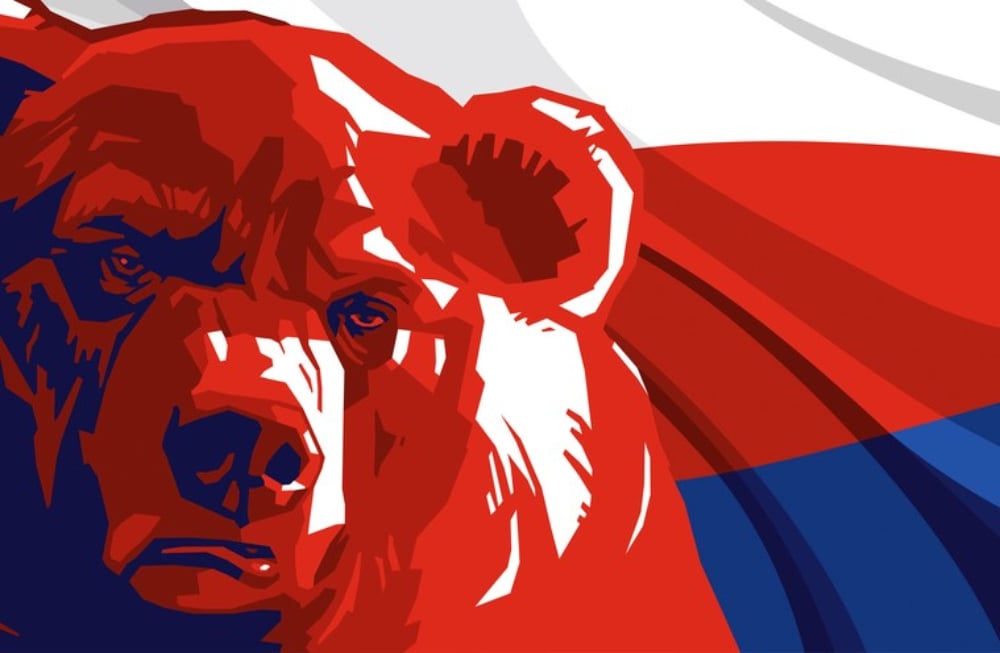The world stands aghast in horror as Ukraine attempts to stave off the overwhelmingly powerful armed forces of a nation that wields all the economic might of... Canada.
That’s what official tallies of gross domestic product around the world say. So how to square that with the fearsome reputation of Russia’s military?
In other words, is the Russian bear inflated and by how much? I went looking for the answer and found it’s complicated, but also encouraging unless you are a fan of Putin.
Comparing sizes
We think about countries’ “size” in different ways. By population, by geography. But also by wealth. And by conventional measures of wealth, the country venting its savagery on Ukraine, the country that has taken Europe hostage and that now threatens the entire peace-based free world order, is rated as a little smaller than Canada. This thought has been bothering me ever since I began reading that sanctions against Russia have created chaos in “the world’s 11th largest economy.”
That economy would not only be smaller than the United States’, smaller than China’s, smaller than Germany’s, Japan’s, Britain’s, France’s or Italy’s. It would even be smaller than Canada’s. (It would also be smaller than South Korea’s, and may have dropped additional notches in the last week.)
How, I wondered, could a country with less money than Canada, a rapacious profiteering class of oligarchs, and both more geography to connect and nearly four times as many people to provide with services, manage to field an 850,000-person regular military more than 10 times the size of Canada’s combined services force of 70,000?
And just compare some other military assets.
Russia’s navy floats:
- One aircraft carrier
- Two battlecruisers
- Three cruisers
- 10 destroyers
- 11 frigates
- As many as 83 corvettes
- 58 ballistic/cruise missile and attack submarines
- 12 ‘special purpose’ submarines
The Royal Canadian Navy:
- 12 frigates
- Four attack submarines
- 12 coastal defence vessels (similar to corvettes but less well armed)
Hmm.
Air forces? Russia: More than 1,260 fighters, including 14 "fifth-generation" stealth fighters. Canada: 43 fighter jets (25 of them of 1980s vintage).
On land, Russia claims to field more than 13,300 tanks, a larger inventory than any other country in the world. Canada’s 1970s-era German-built Leopard Two tanks number all of 82.
That’s to say nothing of Russia’s reported 6,257 nuclear warheads with associated delivery vehicles and support personnel. Canada? Um, zero.
How does Russia do it?
Well, for one thing, it spends a larger share of its national wealth on its military — more than twice as large. According to the U.S. CIA World Factbook, Russia spent about four per cent of its GDP on war machinery in 2020, equivalent to about US$68 billion.
Canada spent less than half as much of its somewhat larger GDP (US$1.74 trillion to Russia’s US$1.70 trillion) on its military, roughly $24 billion.
The difference, a factor of two and a bit, hardly explains how Russia mounts a military with 10 times as many soldiers, 30 times as many jet fighters, and (brace yourself) 162 tanks to each that Canada can afford.
A glitch in Russia’s ranking
A deeper part of the answer lies in the fact that the conventional ranking of Russia’s economy as the world’s 11th largest, two spots below Canada’s, is, to put it mildly, deeply misleading.
The fault lies in the way that ranking is calculated: taking estimates of all the goods and services produced in a given nation (its GDP) in its local currency, and translating those into a global standard currency — typically the U.S. dollar — at market exchange rates.
This serves people interested in trade or investment, transactions where currencies are exchanged at financial market rates. But it badly distorts what different countries’ currencies can actually buy at home. A better measure of domestic economic throw-weight is something called “purchasing power parity” GDP.
By that measure, Russia’s economy isn’t the relatively anemic 11th-placed one we keep reading about. It’s the world’s sixth biggest, behind (in order) only China, the U.S., India, Japan and Germany.
Canada ranks just 15th, three places below Mexico.
And Russia’s US$4.3 trillion home-market purchasing power is nearly two and a half times Canada’s US$2 trillion.
That also amplifies its effective military spending. Instead of $68 billion at market exchange rates, the real buying power of the Kremlin’s roubles is closer to US$155 billion.
An Australian military economist goes even further. Peter Robertson calculates that the special circumstances of military spending mean that even economy-wide purchasing power estimates understate the reality. He places Russia’s effective military budget at US$190 billion.
That is about eight times Canada’s.
Russia’s cut-rate military
Still. Still. The numbers don’t quite sum. Even allowing for the maximal calculations, the Kremlin has $8 to fund its wars for every one that Canada’s Department of National Defence has to spend.
Does that adequately explain Russia’s military force multiples of 10, 30, 162 times Canada’s?
There may be another factor at work. Robertson notes that the extra purchasing power premium for military spending that some countries enjoy is highest for factors that are locally inexpensive, such as personnel. It’s much cheaper to maintain a large conscript army, as Russia does, than a professional volunteer force like Canada’s.
By contrast, there is less of a purchasing premium for military equipment that is more exposed to international economic forces, whether because it is bought or sold to other nations or requires market-traded components.
In brief, the Kremlin’s roubles go further for low-tech gear like tanks than for high-tech items like precision ordnance, jet fighters and nuclear missile submarines.
That may be one more reason that Putin’s invasion has perplexed many military observers for its apparent lack of progress. In addition to Ukrainian heroism, tactical ingenuity and low morale among the invaders, analysts point to the curious absence of air support for Russian forces.
None of that is to dismiss the significance of the Russian army’s crushing weight of old-fashioned artillery and armour on grim display in Ukraine. Or to discount what forces it has held in reserve against a potential conflict with NATO.
But it does suggest that perhaps the difference in apparent military bulk-for-buck is somewhat misleading. That the "get-what-you-pay-for" principle doesn’t entirely disappear from military acquisition. And that not all of Vladimir Putin’s impressive hardware and its long tail of necessary support are quite of the quality and depth that their numbers might imply.
It might also provide some reason to hope that the real Canada, plus its democratic allies, can deter an inflated Russian bear. ![]()
Read more: Politics
















Tyee Commenting Guidelines
Comments that violate guidelines risk being deleted, and violations may result in a temporary or permanent user ban. Maintain the spirit of good conversation to stay in the discussion.
*Please note The Tyee is not a forum for spreading misinformation about COVID-19, denying its existence or minimizing its risk to public health.
Do:
Do not: